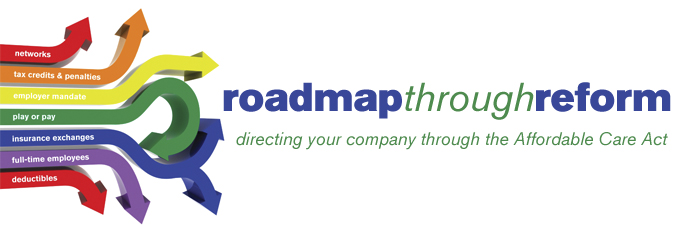
What Businesses Need to Know
The largest component of the ACA for employers is the “Play or Pay” provision which takes effect on Jan. 1, 2015 (the date was originally set for Jan. 1, 2014, but that was recently extended a year by the Obama administration). Employers with 100 or more full-time equivalent employees (FTEs) must offer health insurance coverage to full-time employees or pay a penalty for not offering coverage.
It was recently announced that business with 50-100 employees will have an extra year to phase in health care coverage. The mandate for these "medium-sized companies" to provide insurance will take effect Jan. 2016.
If the employer offers coverage, coverage must be affordable and provide minimum required benefits or the employer will be assessed a penalty for not offering affordable coverage.
Businesses under the mandate will be fined $2,000 per employee (excluding the first 30 employees) if they do not offer coverage for employees who average 30 or more hours per week. There is no penalty for part-time employees not offered coverage.
What is an FTE?
An employer’s 2015 requirements are determined by its number of full-time-equivalent employees. To be considered an FTE, an employee must work an average of 30 hours per week. Two part-time employees working an average of 15 hours per week are equal to one FTE. This is an important point, because at first glance a company with 48 full-time workers may believe it isn’t subject to Play or Pay. However, if that employer has part-time employees, their hours will be combined to determine the FTE equivalent.
How do you know if your company’s health care plan is affordable?
To pass the affordability test, insurance must not cost more than 9.5 percent of the worker’s annual income. Family coverage is not required to meet the affordability test. If it does not meet this affordability standard, employees may receive tax credits to purchase insurance through the exchange.
What is a “grandfathered” plan?
A plan that existed on March 23, 2010 – the day the law was enacted, may be grandfathered. A grandfathered plan is not required to comply with all ACA provisions.
What are minimum required benefits?
The employer-sponsored group health plan must pay at least 60 percent of the plan’s total costs.
Should employers with less than 50 FTEs offer benefits even though it’s not required?
There are several factors to consider before deciding if you will offer benefits including costs, potential tax incentives, corporate culture, the competitive environment, industry norms, and your company’s ability to attract and retain talent.
According to the Bureau of Labor Statistics, these were the norms in 2012:
- Fifty-seven percent of employees in companies with fewer than 100 employees had access to employer-provided medical care benefits.
- On average, employers with fewer than 100 employees assumed 63 percent of the cost of family coverage.
- The benefit “take-up” rate was 48 percent for private industry workers. Take-up rate is the percentage of workers with access to a plan who actually participate in a plan.
- 37.4% of employees in Kentucky companies with fewer than 50 employees have access to employer-provided health coverage. More than 95% of Kentucky companies with more than 50 employees offer coverage.
Which companies are eligible for tax incentives and which aren’t?
Small businesses in Kentucky may be eligible for the new small business tax credit that makes it easier for businesses to provide coverage for their workers and makes premiums more affordable. To qualify, your business must have fewer than 25 employees and average annual wages below $50,000 and must pay at least half of the cost of their employee’s health insurance and the health plan offering must meet Affordable Care Act requirements. This IRS guide will help you determine if your business qualifies.
In 2015 and beyond, eligible employers may receive a tax credit of 50% of the employer’s contribution towards insurance premiums; tax exempt businesses may receive 35%.
Beginning in 2013, individuals earning more than $200,000 ($250,000 joint filers) will pay an additional 0.9 percent tax for Medicare and 3.8 percent tax on investment income.
Small businesses with fewer than 100 employees who work 25 or more hours per week on average are eligible for a grant to start a wellness program if they did not have one in place before March 2010.
